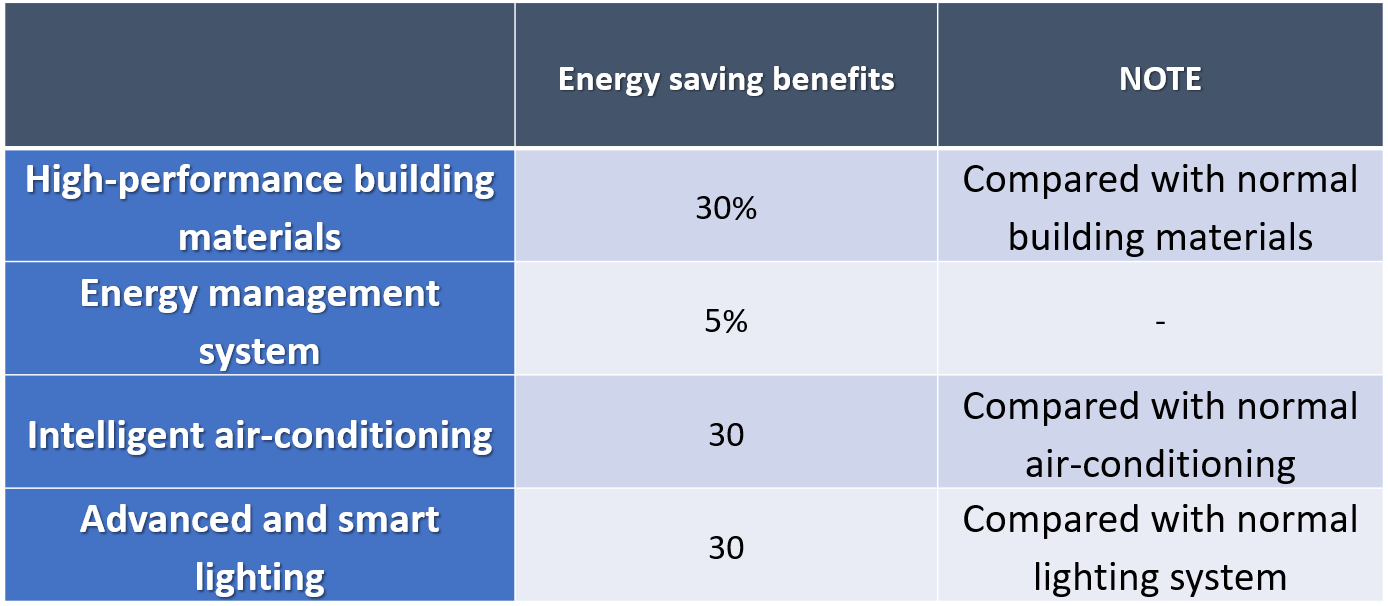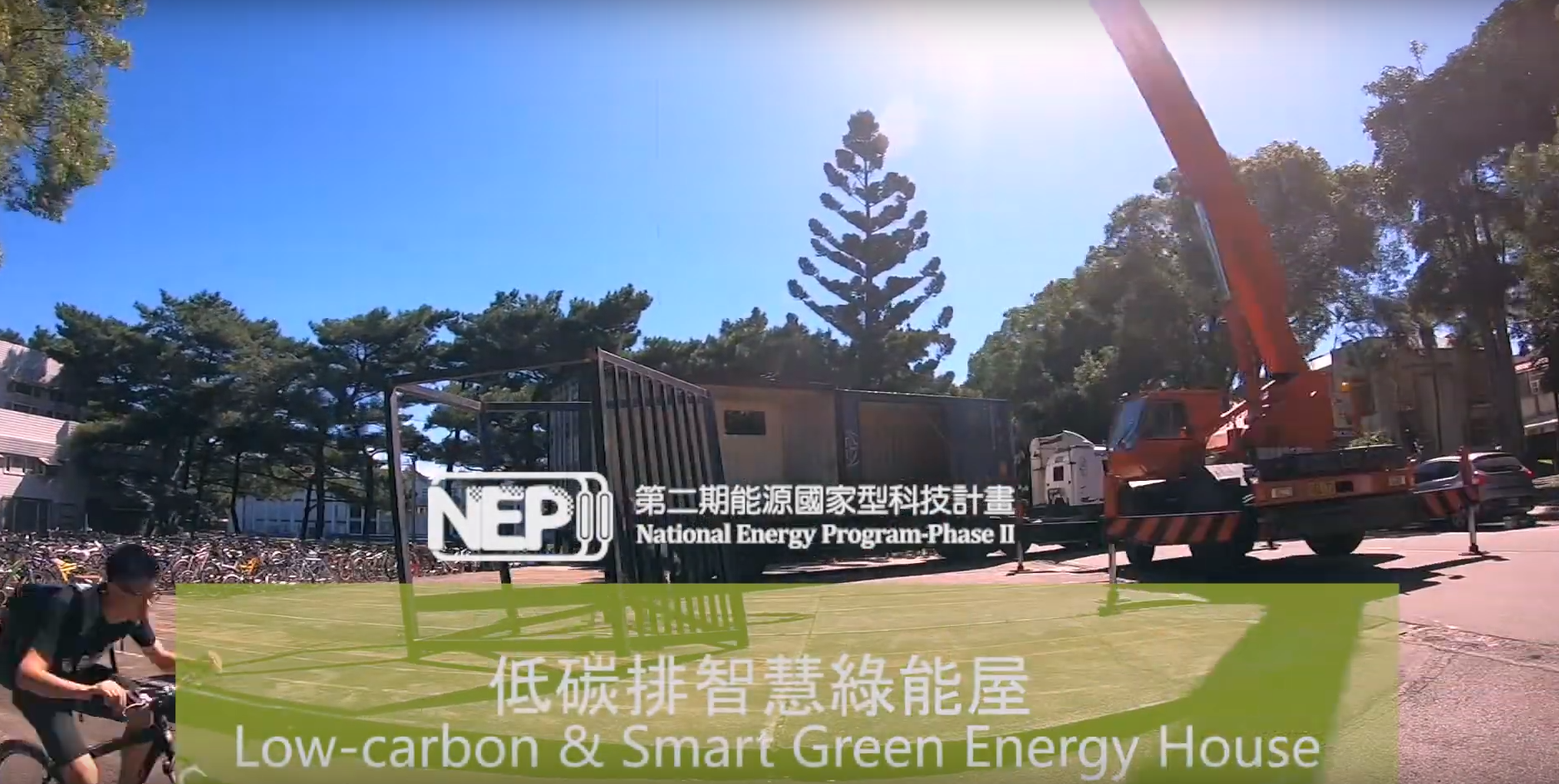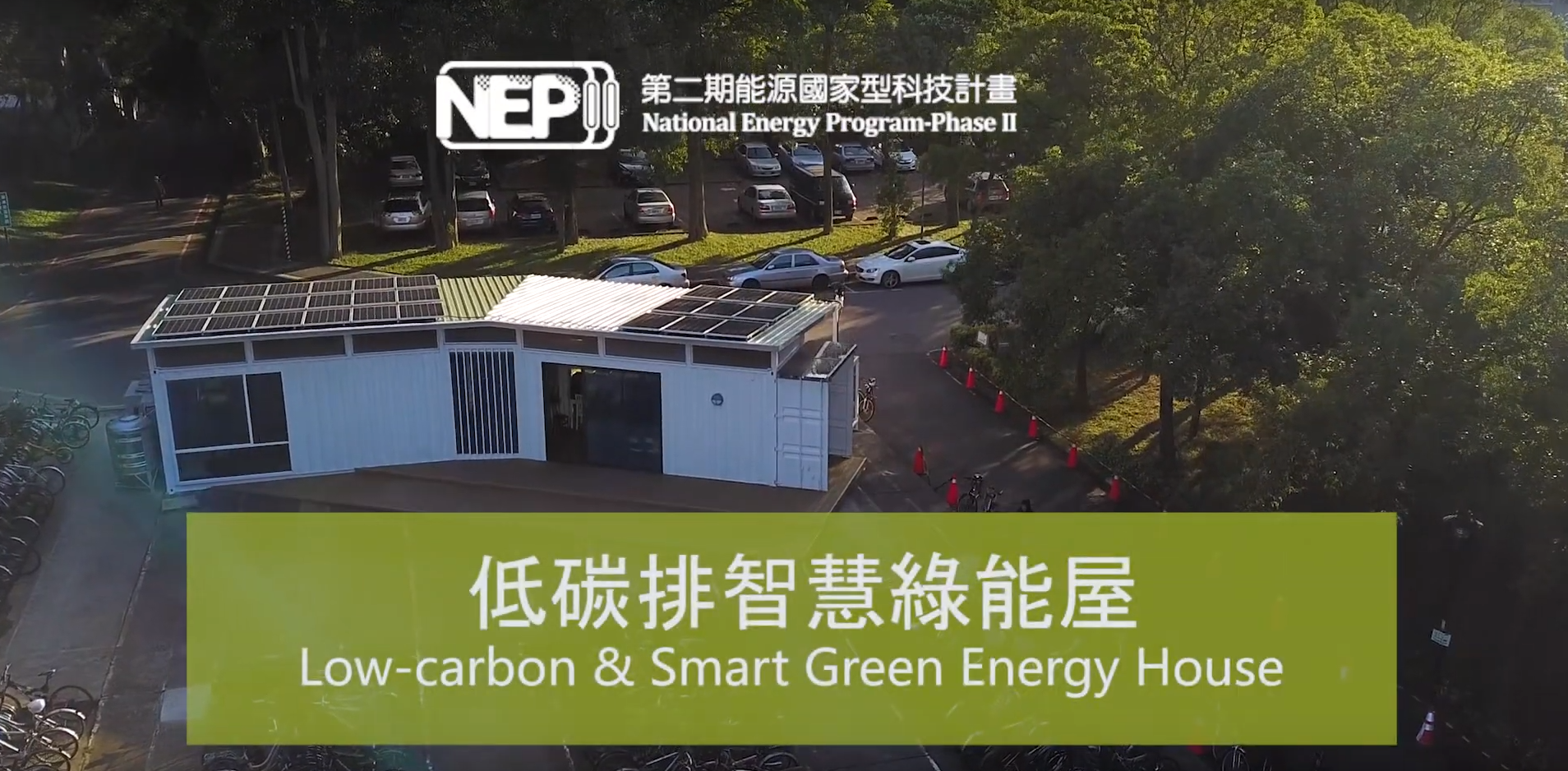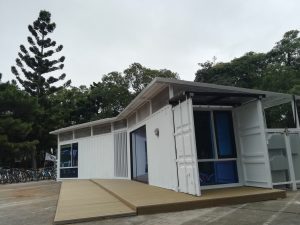
Project Description
This project, “low-carbon and smart green buildings”, integrates energy production, energy storage, and energy conservation technologies. We implement these technologies in a model house built with used containers. The advantage of the container house is that it can be quickly and easily constructed and can be used in many locations. More importantly, Chinese Taipei uses a large amount of containers, and the concept of “steel recycling” is demonstrated through the reuse of used containers. Key technologies such as high-performance building materials, building micro-grid, energy information and management system, intelligent air-conditioning and advanced lighting system are practiced and evaluated. This low carbon smart green building can closely achieve net zero energy. In energy production part, we installed an 8 kW PV system. For energy storage, we have a 21 kWh lithium-ion battery system. At fully charged, it is enough for two days for a family with a power consumption of 10 kWh per day. With the PV supply, the supply duration can be further extended. In extreme situation, if bad weather continues for several days, we also installed a fuel cell power system. This 5 kW fuel cell system can further extend the power supply duration for the house. Therefore, this building has high energy usage flexibility. Compared to traditional buildings, this container house uses 35% less energy. The building can be used for testing and validating products or technologies developed by industries or academia institutes, as well as showcasing the general public and students the most advanced energy technologies.
Innovativeness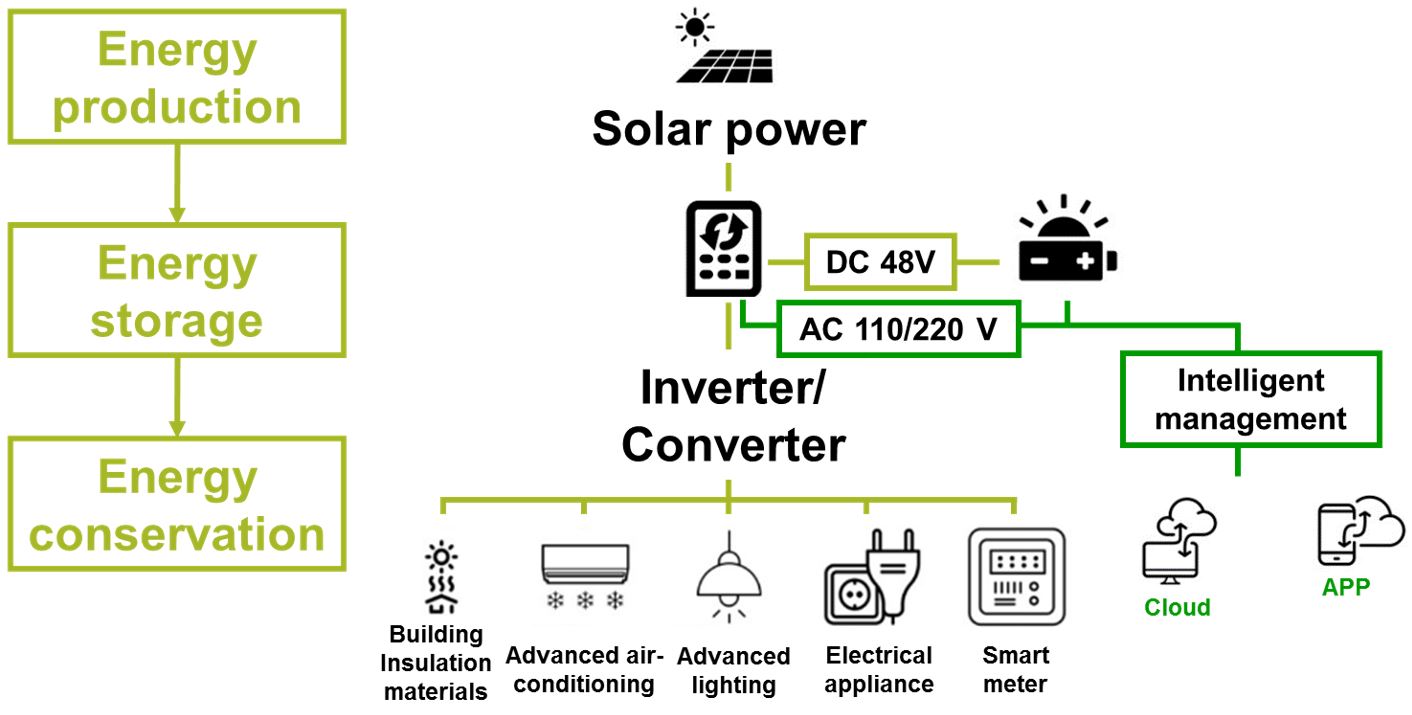
Technologies developed for this building include:
- Thermal analysis for low-energy-consumption buildings (LEB):
- The accuracy of developed simulation model has been validated with measured data. The model is now ready for use to simulate future LEB or to provide improvement recommendation of current non-LEB.
-
The simulation model can also calculate the predicted mean vote (PMV).
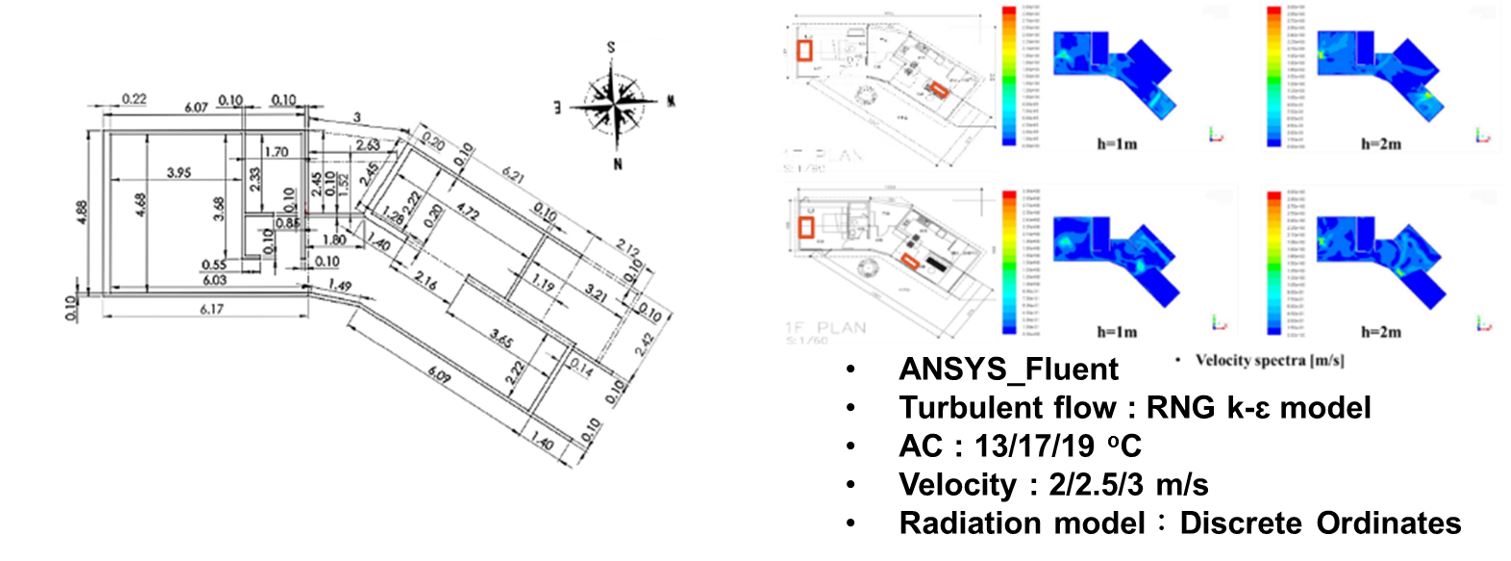
-
Cooling load calculation for different regions of Chinese Taipei:
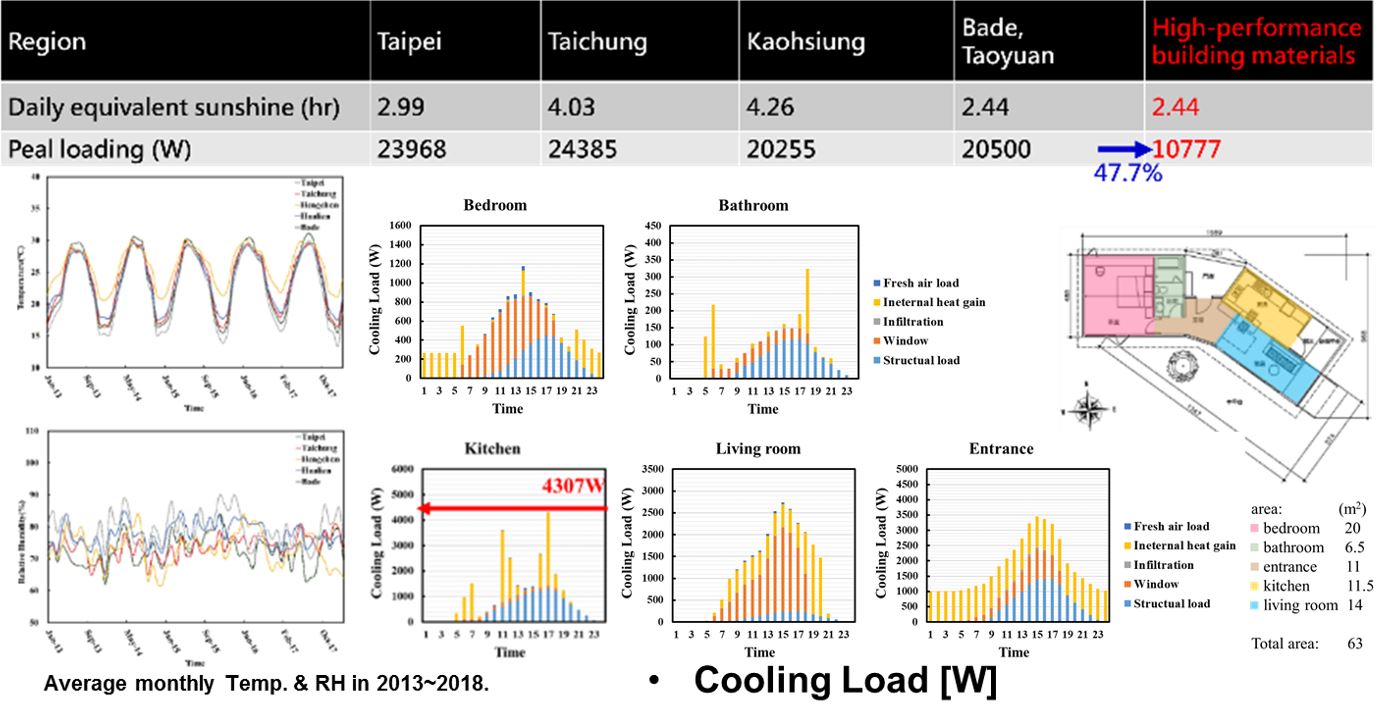
The simulation software can predict the cooling load for buildings in different locations in Chinese Taipei by taking into consideration of different weather conditions.
-
High-performance building materials:
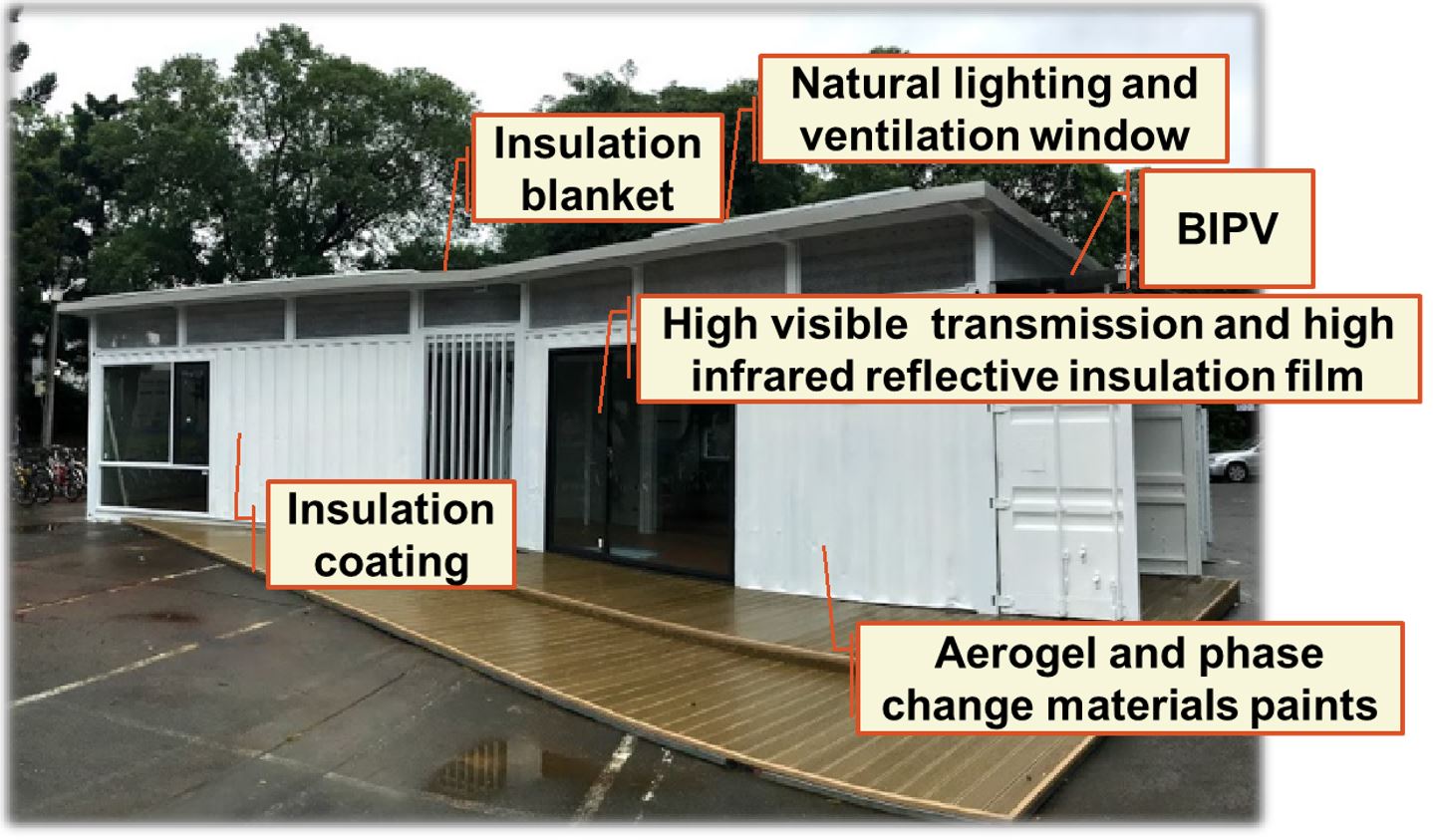
High-performance building materials used in the model house.
-
Wall insulation with phase change materials:

The phase change material absorbs heat in hot day time. It releases heat at night when temperature drops.
-
High visible transmission and infrared reflection film:

The high visible transmission and infrared reflection film not only let visible light goes through window but also block the heating infrared.
-
Integrated control technology of building micro-grid system:

The micro-grid system has the ability of synchronous detection of renewable energy, grid-connected technology, power control, and power quality improvement.
-
Energy Management System:

All loads in this building are connected to the internet. It can provide the user of the information for each load. By this way, we can monitor the energy consumption of every load and remind the user to turn off the loads that are not being used.
-
Intelligent air-conditioning with plug-in controller:

-
Smart lighting:
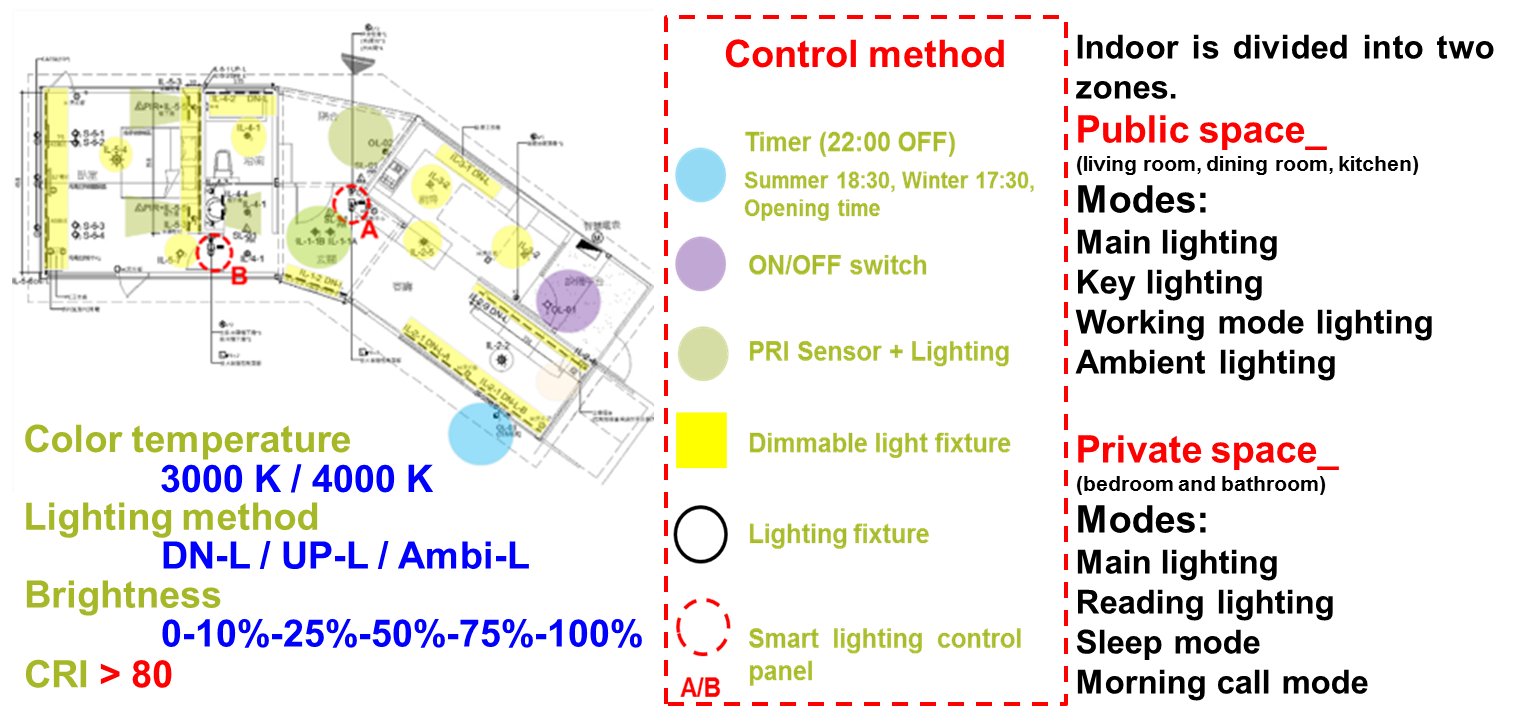
The energy management system platform presents real-time energy consumption and cumulative energy consumption of the building.
- Fuzzy-based expert system for fault protection in microgrid
In this technology development, the design of fuzzy-based expert system is proposed to perform the fault protection for the microgrid in grid-connected mode. In this way, the microgrid can be isolated from the utility power system to prevent serious voltage fluctuation when the power quality of power system is disturbed. The extracted power signal would be firstly analyzed with discrete wavelet transform (DWT) and the energy variation of singular power signal can be obtained according to Parseval Theorem. Then, the extracted features would be fed into the developed fuzzy-based expert system for the identification of faults and activation of protection relay. From the experimental results, it is found that the proposed fuzzy-based expert system can effectively perform the fault protection of microgrid.
To examine the performance of proposed fault protection expert system, the experimental setup in above figure is implemented.

For the training of expert system, 1000 power signals extracted from this setup are used. The detection results of normal power signal and interruption are displayed in above two figures, respectively. According to numerous experimental tests, the proposed method can deal with most identification of power events correctly compared with the threshold method (TM) in, the traditional fuzzy analysis (FA), and the traditional back-propagation neural network (BPNN), as listed in below Table.

(○ means correct identification, × means incorrect identification)
The incorrect identification for the normal power signal with BPNN is resulted from the inefficient robustness of DWT to the noise. In the proposed method, the drawback of DWT would be modified with the fuzzy analysis to largely reduce the interference of noise.
Performance
The major power generation system in this building is 8 kW PV. In addition, 0.3 KW BIPV is built to enhance power generation .The average peak sun-hours in Taoyuan is around 3 hours in year.
Total power generation per day is 8 kW*3 hours=24 kWh/day
Energy conservation technologies used in this building include high-performance building materials, energy management system, intelligent air-conditioning and advanced and smart lighting.
Table 1. The residential energy consumption in summer and non-summer period
Table 2. Energy saving benefits
Table 1 shows the residential energy consumption in summer and non-summer period. Table 2 shows the energy saving benefit comparisons between high-performance building materials, intelligent air-conditioning, advanced, smart lighting and conventional technologies. Additionally, energy management system can provide 5% energy savings. The details of energy saving benefits are calculated as following
● Residential in summer:
High-performance building materials: 41%*30%=12%
Energy management system: 5%
Intelligent air-conditioning: 41%*30%=12%
Advanced and smart lighting: 18%*35%=6%
Total energy savings: 35%
● Residential in non-summer:
High-performance building materials: 6%*30%=1.8%
Energy management system: 5%
Intelligent air-conditioning: 6%*30%=1.8%
Advanced and smart lighting: 35%*35%=12.25%
Total energy savings: 20.85%
● Calculation
The electricity price in Chinese Taipei is around 2.5 NTD/kWh
The electrical load for 5 people house is around 15 kWh
The energy saving in this system in summer: 15 kWh*0.35*92 days=483 kWh
The energy saving in this system in non-summer: 10 kWh*0.2085*273 days =569.2 kWh
Total energy saving in this system in year: 483+569.2=1052.2 kWh
Total power generation (solar power) in this system: 8.3 kW*3 h*365 day=9088.5 kWh
Total electrical load in year: 15 kWh*92 days+10 kWh*273 days=4410 kWh
Net operating cost savings per year: 1052.2 (kWh)*2.5 (NTD/kWh)/30=87.6 USD
Kilowatt-hours savings per year: 4410 kWh
Carbon emissions offset: 9088.5*0.52/1000=4.7 metric tons CO2 per year
Moreover, Chinese Taipei have 8.5 million households recently. If there are 1/20 houses or companies using our smart green building concept. It can totally saving 13.88 million NTD/day by energy conservation technology.
Activities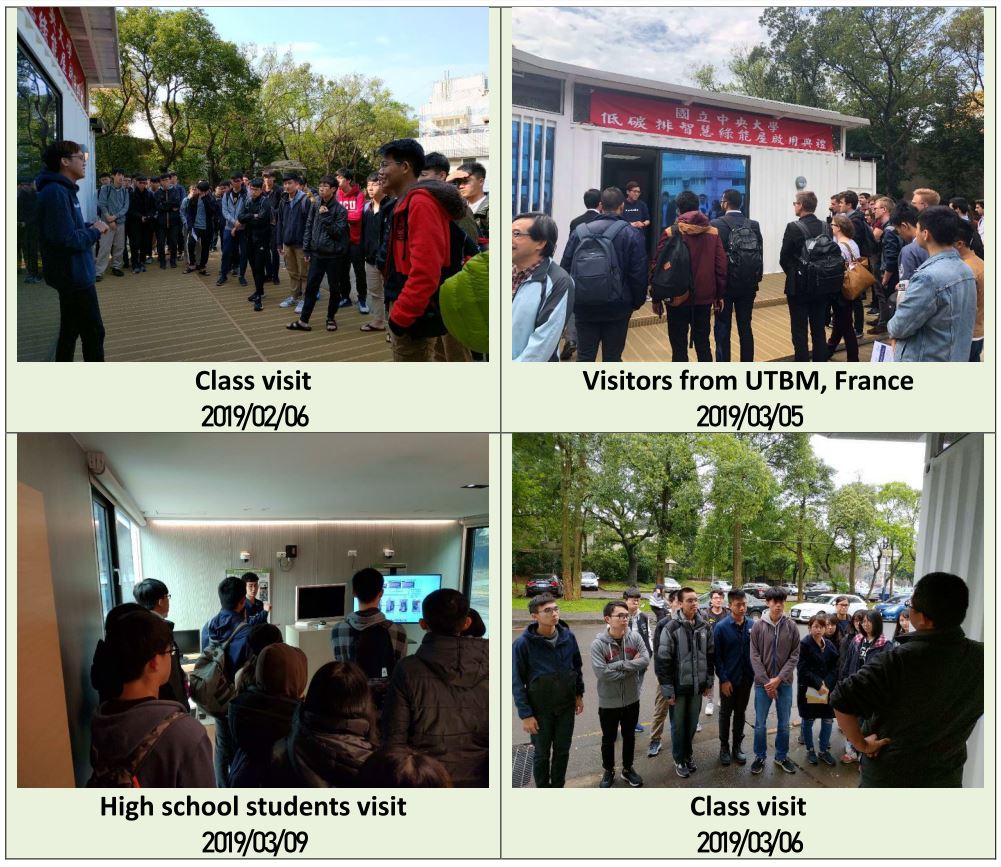
In addition to research, the building will also be used as the demonstration site for teaching purposes. Students can come here to learn various energy technologies.
※Time-lapse video of construction
https://www.youtube.com/watch?v=jL-AmDYdsT0
※The Low-carbon & Smart Green Energy House
https://www.youtube.com/watch?v=jfM3XF1p4DE
